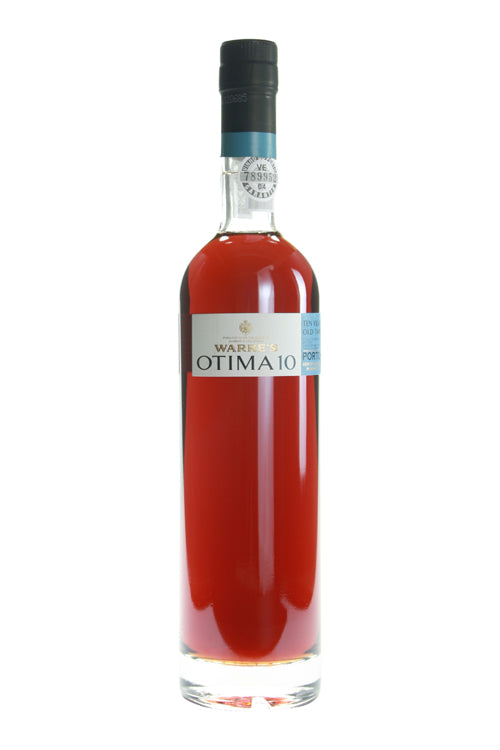1
/
of
1
Warre's 10 Year Old Otima Tawny Port - NV (500ml)
Warre's 10 Year Old Otima Tawny Port - NV (500ml)
Regular price
$34.99
Sale price
$34.99
Regular price
$34.99
Unit price
/
per
A ripe and rich tawny. Loads of caramel, honey and dried fruits, with just a hint of Douro bake, or iodine character. Full-bodied, sweet and very toffeelike on the palate. Long finish. Dying for nuts and Stilton. Drink now. 5,000 cases imported. –JS
Wine Spectator - 90 points
Wine Spectator - 90 points
Availability:
31 In Stock
$25 Shipping on Orders +$299
Couldn't load pickup availability
Share :

- varietal
- Region
- Sub - Region
- Type
- Reviews
Product Review
A ripe and rich tawny. Loads of caramel, honey and dried fruits, with just a hint of Douro bake, or iodine character. Full-bodied, sweet and very toffeelike on the palate. Long finish. Dying for nuts and Stilton. Drink now. 5,000 cases imported. –JS
Product Score
90
There are over 80 grape varieties grown in the Douro valley. Most are old vines jumbled together within the same vineyards and are indistinguishable from one another. There are however, five varieties acknowledged as having best adapted to the region and which make the finest Port. Listed in order, from the most popular to the least, they are: - Touriga Franca, Tinta Roriz (Tempranillo), Tinta Barroca, Touriga Nacional (considered the finest), and Tinto Cão.
Port is a fortified wine originally produced in the Douro Valley in Portugal. The name is an Anglicized form of the town Oporto, where the wine is aged and from where it is shipped. The discovery of this style is credited to English wine merchants and shippers who were seeking new sources of wine during 17th century trade disputes with France. Because the wine is fortified with grape brandy, which stops the fermentation process and raises the alcohol content, it could be shipped back to England or any outpost of the empire unspoiled. Even in the 21st century British producers still dominate the industry, in particular the Taylor Fladgate partnership and the Symingtons, whose holdings include Graham, Warre, Dow, and Smith Woodhouse. Although producers in a number of New World countries, including Australia, South Africa and California have replicated the Port style, the traditional defined area within the Douro valley still produces the vast majority of Port on the world market. Ports are divided into two broad types, cask-aged and bottle-aged. Within the bottle-aged category there are two different styles. Ruby, intended for early consumption and generally the least expensive, and Vintage Port which are aged for a short time in oak (2 to 3 years) are then aged for a significant time in bottle (10 to 30+ years). There is also Single Quinta, which is generally made in non vintage years from the port houses single estate vineyards. Cask-aged Ports such as Tawny, Colheita (Tawnies from a single year) and LBVs (Late bottle vintages) do their maturing prior bottling so are ready to be consumed straightaway and do not develop further in the bottle. Although Port is normally reserved for special occasions and often consumed alongside Stilton, the use of different styles has often been neglected. White port can be a great component in cocktails and is becoming increasingly popular. Tawny ports also make a great Summer drink, often preferred by locals in the sun baked Douro valley, either as an aperitif or accompaniment to dried fruits and nuts as well as pastries.
NULL
Dessert wines are usually any sweet wine drunk with or around a meal. White fortified wines (fino and amontillado sherry) are usually drunk before the meal, and the red fortified wines (port and madeira) drunk after it. Most fortified wines are regarded as distinct from dessert wines, but some of the less strong fortified white wines, are regarded as honorary dessert wines. In the United States a dessert wine is legally defined as any wine over 14% alcohol by volume, which includes all fortified wines.


